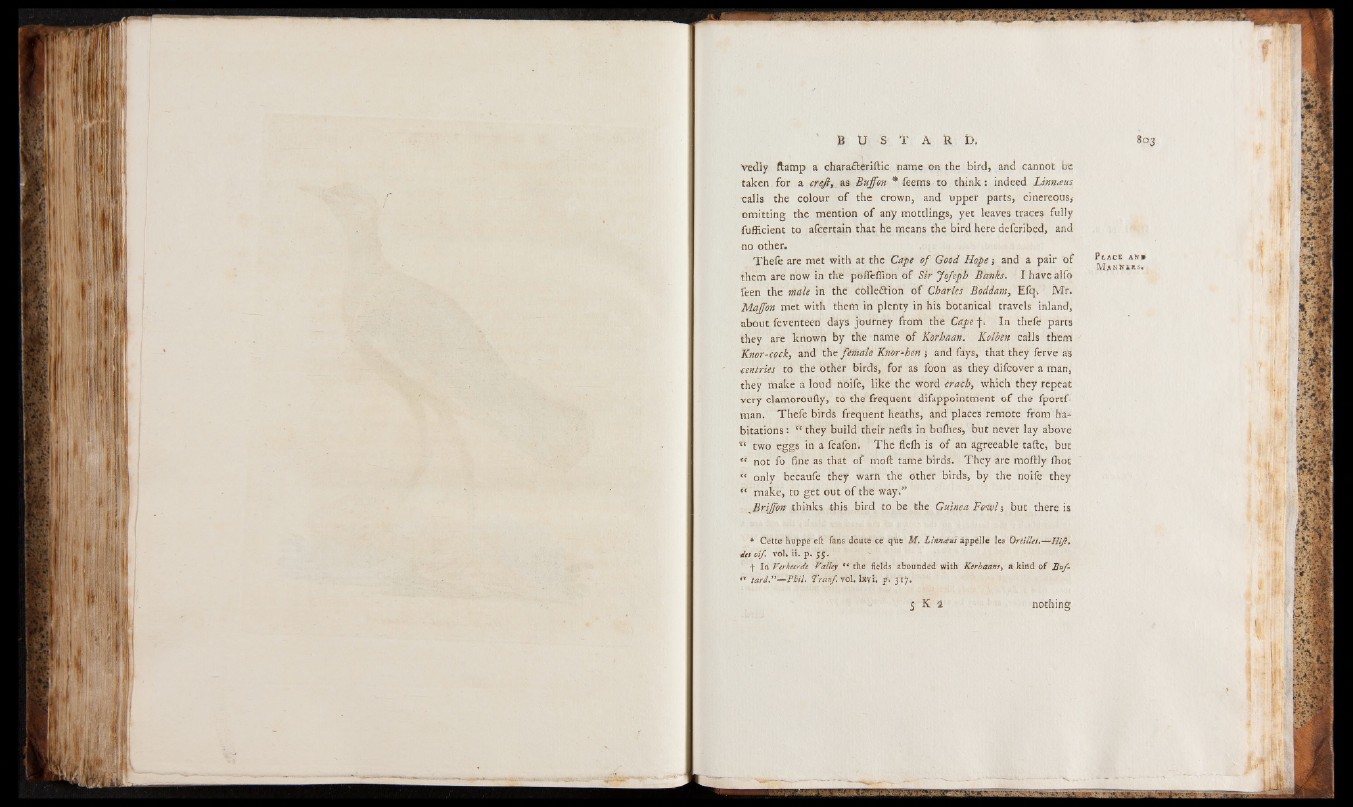
B 0 S T A ft £>.
Vedly ftamp a charafteriftic name on the bird, and cannot be
taken for a creft, as Buffon * feems to think: indeed Linnaus
calls the colour o f the crown, and upper parts, cinereous,
omitting the mention of any mottlings, yet leaves traces fully
fufficient to afcertain that he means the bird here defcribed, and
no other.
Thefe are met with at the Cape of Good Hope; and a pair of *?L„Ace At<*
• * /* '• - — MAKNERS*
them are now in the poffeffion of Sir Joseph Banks, I have alio
feen the male in the colleftion of Charles Boddam, Efq. Mr.
Majfon met with them in plenty in his botanical travels inland,
about feventeen days journey from the Cape f , In thefe parts
thev are known by the name of Rbrhaan. Kolben calls them
Knor-cock, and the female Kner*ken ■, and fays, that they ferve as
■ entries to the other birds, for as foon as they difeover a man,
they make a loud noife, like the word Crath, which they repeat
very clamoroufly, to the frequent difappointment of the fportf-
man. Thefe birds frequent heaths, and places remote from habitations
: v they build their nefts in bulhes, but never lay above
two eggs in a feafon. The flelh is of an agreeable tafte, but
“ not fo fine as that of moft tame birds. They are moftly lhot
“ only becaufe they warn the other birds, by the noife they
“ make, to get out of the way.”
,Brijfon thinks this bird to be the Guinea Foetal % but there is
* Cette huppe eil fens doute ee qtte M. Litinaui appelle les Ortilles.—Hijt,
Jet oif. vol. ii. p. j$.
f In Verkeerde t'alky “ the fields abounded with Kerhaam, a kind of Buf-
*• tard.”—Phil. Tratif vol. btvi. pt. 3 .
5 K I nothing